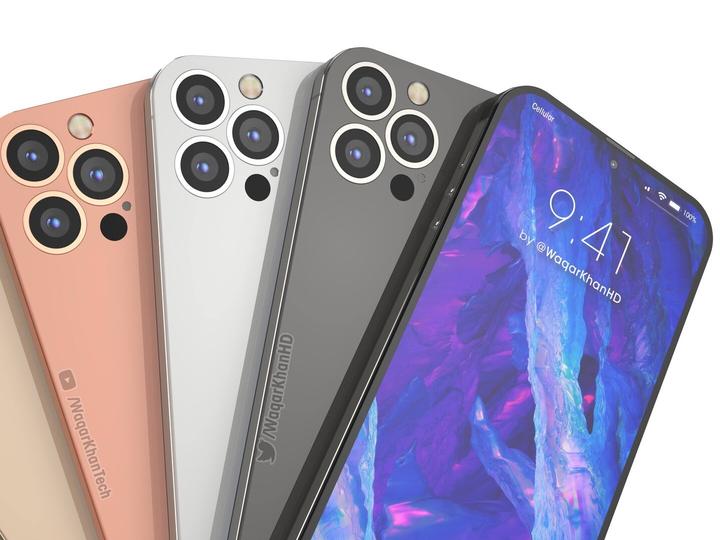The iPhone 13 series supports fast Wi-Fi 6 connectivity, one of the latest wireless internet standards you can hope for. Wi-Fi 6 ensures faster performance, higher bandwidth, and lower latency. Combined with 5G connectivity, it should improve your overall internet experience. And faster internet is a part of an overall faster mobile experience that the iPhone 13 models deliver. Next year, Apple will reportedly bring Wi-Fi 6E support to the iPhone 14 series, the first significant upgrade since iPhone 11. And it’s the kind of wireless internet speed upgrade you should not ignore.
Don't Miss: Wednesday’s deals: Ring Doorbell blowout, Roku sale, iPad Air discountWhy Wi-Fi 6 is a big deal
Not all smartphone buyers might care about the kind of Wi-Fi support they’re getting, as long as it works. But some consumers do want faster internet everywhere. The combination between 5G and Wi-Fi 6 will get the job done, but with a huge caveat. You need to have coverage.
It’s not enough for the iPhone 13 models to support 5G and Wi-Fi 6 if there’s no coverage in your area. Your carrier needs to have 5G towers in your area for you to enjoy faster cellular internet speeds. Similarly, you have to install Wi-Fi 6 routers at home and the office and ensure that your ISP delivers the kind of speed that warrants Wi-Fi 6 hardware investments.
The same goes for next year’s iPhone 14 models that will reportedly support Wi-Fi 6E. You’ll need to have the right hardware and to enjoy the faster wireless data speeds.
Importantly, Wi-Fi 6 and Wi-Fi 6E do not deliver just faster wireless internet. They also improve bandwidth, lower the latency, and lower the interference. That means you can beam more data between devices faster than before, and these are the qualities that make Wi-Fi 6 and Wi-Fi 6E so exciting.
It’s not just about being able to stream 4K content on all your devices without interruptions. It’s about everyone at home or the office being able to do it simultaneously on an increasing number of always-connected devices. In the case of the iPhone 14, it’s also about the future of Apple’s iPhone ecosystem.

The iPhone 14’s Wi-Fi 6E upgrade
What Wi-Fi 6E brings to the table is again something that most people might not care about. It supports additional frequencies, with 6GHz joining the usual 2.4GHz and 5GHz bands commonly associated with wireless internet. This further improves the available bandwidth for data exchange between devices.
Well-known analyst Ming-Chi Kuo said in a note to investors that the iPhone 14 phones will support Wi-Fi 6E. On top of that, Apple’s first head-mounted display device will come with Wi-Fi 6E connectivity. That’s the “Apple Glass” device that rumors say will deliver both virtual reality (VR) and augmented reality (AR) features soon.
Apple’s quick adoption of Wi-Fi 6E will convince other rivals to do the same, especially companies developing AR and VR hardware. Facebook (Meta) is one of them.
The wireless mixed reality experience
Head-mounted displays will feature high-resolution displays that beam content right in front of the user’s eyes. They need a constant stream of data to support immersive content consumption, especially video games. The easiest way to do that is to hook VR headsets to computers via a physical cable. But that won’t be good enough for devices of the future, especially glasses that can offer mixed reality (MR) experiences.
This is where Wi-Fi 6E comes in. It’s not just about fast internet, but also about beaming plenty of content to nearby AR and VR glasses. And that’s precisely Kuo’s point. The analyst said that Wi-Fi 6E is essential for high-speed wireless transmission for AR and VR devices.
Users will want to beam mixed reality content to glasses from mobile devices rather than traditional PCs. That’s why the iPhone 14 models have to support the same wireless standards as Apple’s future glasses.
He said that future devices will offer support for Wi-Fi 6/6E (2022), Wi-Fi 6E/7 (2023), and Wi-Fi 7 (2024). But he did not provide any product examples. Also, he did not link the roadmap to Apple’s own devices.
Beyond the iPhone 14
Having Wi-Fi 6E support in the iPhone 14 and all future Apple devices launching next year also paves the way for a different development. Apple has long been rumored to work on an iPhone that has no ports or buttons. Apple eliminated the 3.5mm headphone jack in 2015, so all that remains is the Lightning connector.
Lightning serves two purposes: It delivers power and transfers data. Apple made a big deal of the iPhone’s MagSafe wireless charging abilities, which solves the first part. Some people might only charge their iPhones wirelessly already.
But you still need a Lightning cable if you want to back up the iPhone or iPad with a computer or transfer large data files. That’s where Wi-Fi 6E will come in handy. If Apple plans to rely on the wireless standard to beam data to its mixed reality glasses, it can also connect the iPhone to Mac and PC for quick, reliable backups.
This is just speculation. But the point is that Wi-Fi 6E might be a much bigger upgrade for the iPhone 14 series than you might think.








